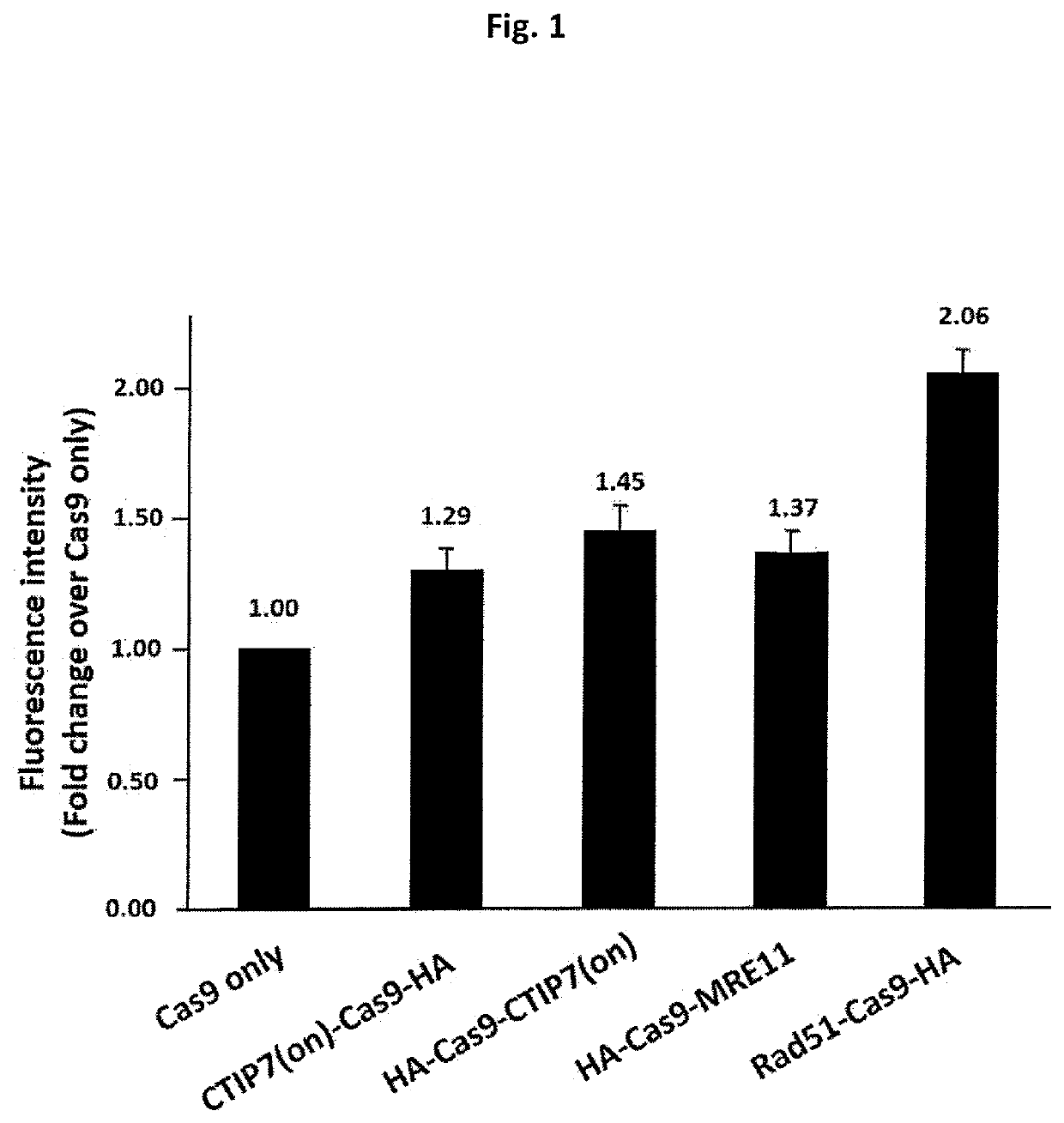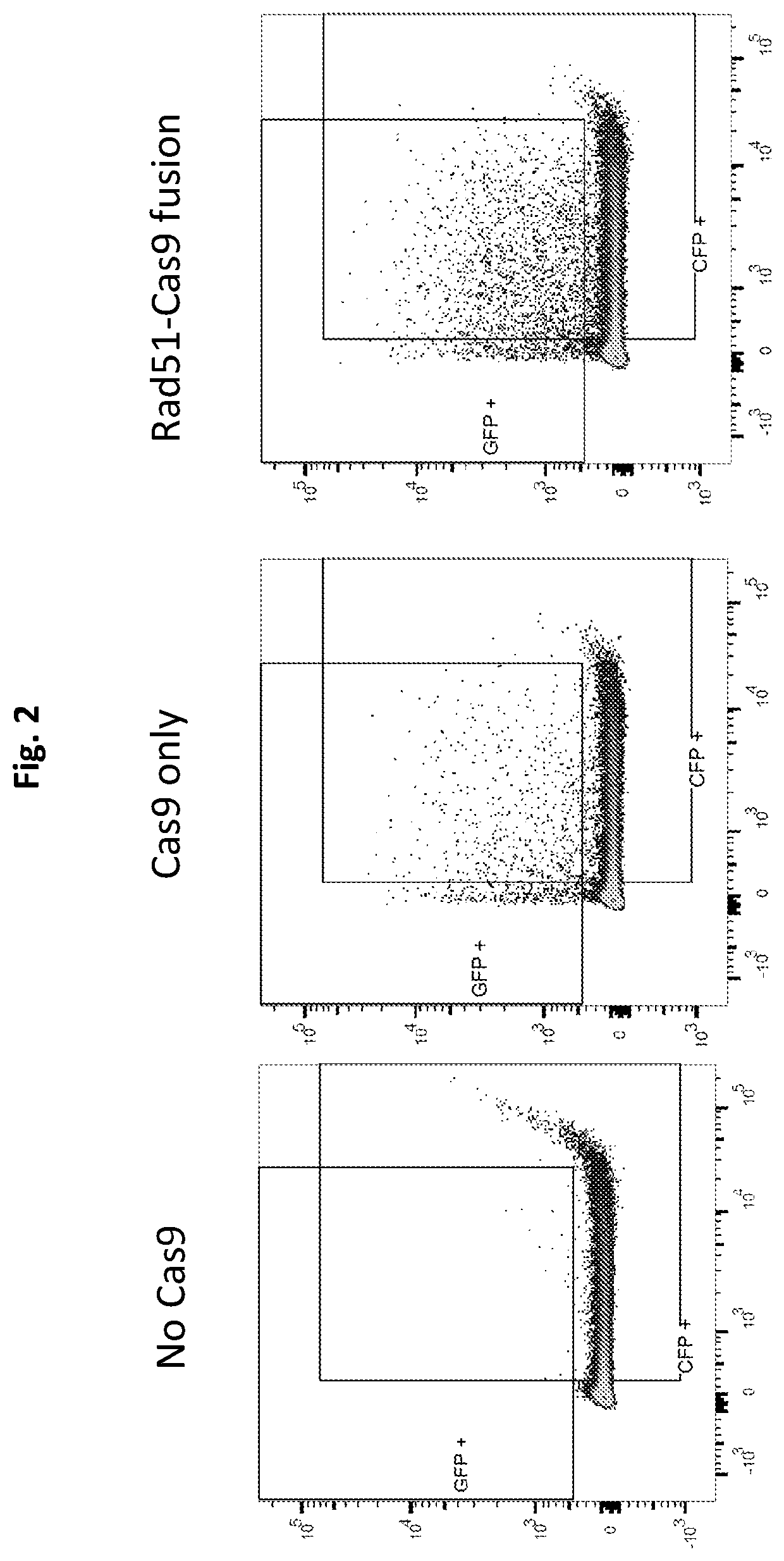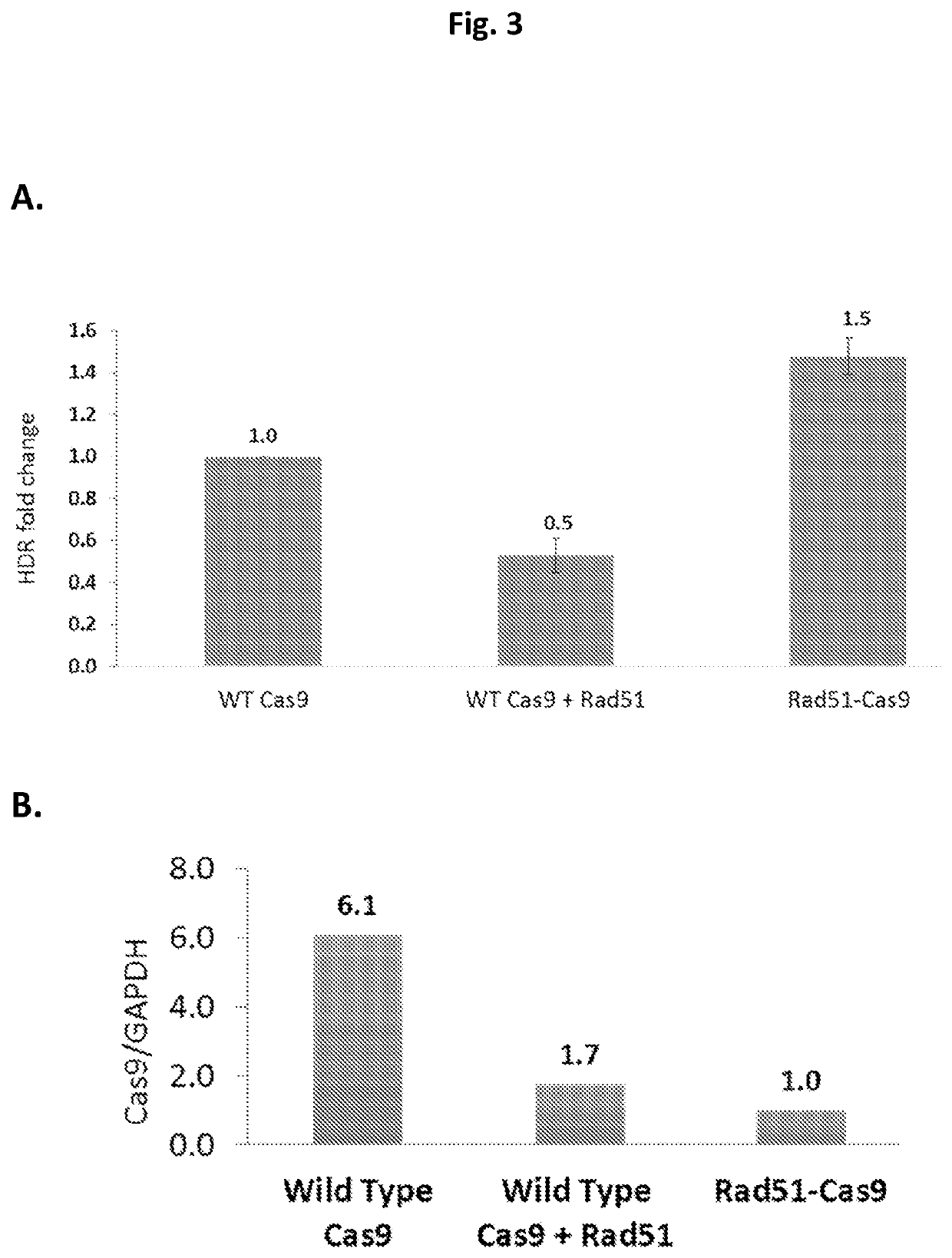Compositions and methods for promoting homology directed repair mediated gene editing
a technology of directed repair and gene editing, applied in the direction of viruses/bacteriophages, enzyme stabilisation, peptides, etc., can solve the problems of reducing the efficiency and accuracy of the process, unable to control the division of labor between the cellular dna repair mechanisms, and the majority of breaks will be subjected to repair, so as to reduce the off-target effect of a nuclease, increase the efficiency, and reduce the off-target effect of a nucleas
- Summary
- Abstract
- Description
- Claims
- Application Information
AI Technical Summary
Benefits of technology
Problems solved by technology
Method used
Image
Examples
example 1
iting by Cas9-HDRP Increases the Rate of GFP Gene Correction
[0236]An assay system for determining the recombination rates of donor DNA to a desired location in the genome is described. Specifically, an HDRP-Cas9 fusion protein system for enhanced CRISPR-Cas directed recombination at a desired location in the genome of a human cell. The system comprises:[0237]1. pLeti6V5-iGFP2 lenti-viral expression vector SEQ ID NO: 01 harboring a GFP gene which comprises two stop codon mutations at locations 96-99 and 102-105 of the GFP coding sequence SEQ ID NO: 02. These stop codons lead to premature termination during translation and results in a truncated GFP protein comprising the first 31 amino acids of the GFP protein. This fragment alone lacks any fluorescence properties detectable by standard detection methods (e.g light microscopy Flow-cytometry and microplate reader). In addition, the vector also includes a Blasticidin resistance gene that enables viability-based selection towards cells ...
example 2
iting by a Cas9-HDRP Fusion Protein Increases the Rate of GFP Gene Correction Greater than Co-Expression of Cas9 and a HDRP as Separate Polypeptides
[0257]The effect of Cas9, Cas9 co-expressed with Rad51 as separate polypeptides and Rad51-Cas9 fusion protein on HDR efficiency was compared. To this end, an expression vector carrying one of the relevant expression cassettes (i.e., Cas9 with or without HDRP fusion, SEQ ID NO: 05 and SEQ ID NO: 09, and Rad51, SEQ ID NO: 10), were introduced into 293T-iGFP cells along with the donor DNA oligo DD-GFP-C-88ss (SEQ ID NO: 4) and the guide RNA expression vector pGFP-GUID1 (SEQ ID NO: 3). Transfected cells were harvested from individual wells of a 6-well plate at 48 hr post transfection. Cell suspensions of each sample were then transferred to a FACS compatible tube for measurement of GFP florescent intensity.
[0258]Flow cytometry was performed on a BD-LSRII (Becton Dickinson) and analysis was done using FlowJo FACS analysis software.
[0259]Surpr...
example 3
iting by a Cas9-HDRP Fusion Protein Increases the Rate of GFP Gene Correction and is Influenced by the Identity of the Linker Sequence
[0261]The effect of Rad51-Cas9 fusion proteins having different linkers (SEQ ID NO: 9, SEQ ID NO: 11 or SEQ ID NO: 12), on HDR efficacy was evaluated as follows: 300 ng of an expression vector carrying one of the relevant expression cassettes i.e., Cas9 (SEQ ID NO: 05), CAS9-P2A-Rad51 (SEQ ID NO: 13), Rad51-Cas9 fusions including different linkers (SEQ ID NO: 9, SEQ ID NO: 11 or SEQ ID NO: 12), were introduced into 293T-iGFP cells via lipofectamine 3000 transfection along with 20 pmol of the donor DNA oligo DD-GFP-C-88ss and 50 ng of the guide RNA expression vector pGFP-GUID1. Transfected cells were harvested from individual wells of 6-well plate at 72 hr post-transfection. Cell suspensions of each sample were then transferred to a FACS compatible tube for measurement of GFP florescent intensity. Flow cytometry was performed on a BD-LSRII (Becton Dick...
PUM
| Property | Measurement | Unit |
|---|---|---|
| concentration | aaaaa | aaaaa |
| length | aaaaa | aaaaa |
| composition | aaaaa | aaaaa |
Abstract
Description
Claims
Application Information
 Login to View More
Login to View More - R&D
- Intellectual Property
- Life Sciences
- Materials
- Tech Scout
- Unparalleled Data Quality
- Higher Quality Content
- 60% Fewer Hallucinations
Browse by: Latest US Patents, China's latest patents, Technical Efficacy Thesaurus, Application Domain, Technology Topic, Popular Technical Reports.
© 2025 PatSnap. All rights reserved.Legal|Privacy policy|Modern Slavery Act Transparency Statement|Sitemap|About US| Contact US: help@patsnap.com



